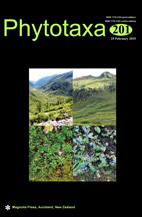Abstract
A hypogeal fungus, referred to in the local Malayalam language as nilamanga (meaning hypogeal mango) is often used by traditional healers and tribal people in Kerala State, India as a cure for an assortment of ailments. Taxonomic identity of this fungal morph has long intrigued mycologists starting from M. J. Berkeley who provisionally named it as Sclerotium stipitatum Berk. & Curr. in 1860. Its unique morphology and total lack of spores of any kind defied proper identification. Morphological examinations revealed that a nilamanga specimen that we obtained recently from Kerala was indistinguishable from Berkeley’s Sclerotium stipitatum currently preserved at Kew herbarium. Molecular phylogenetic methods unequivocally proved that the nilamanga specimen was Xylaria acuminatilongissima, a termite associated species first reported from Taiwan. The hypogeal origin of nilamanga specimens indicate that they could very well be growing on abandoned subterranean termite nests. The sterile structure can be considered as a morphologically variable, multihyphal aggregated sclerotial stage of the fungus that can remain dormant or quiescent when the environment is unfavourable.

